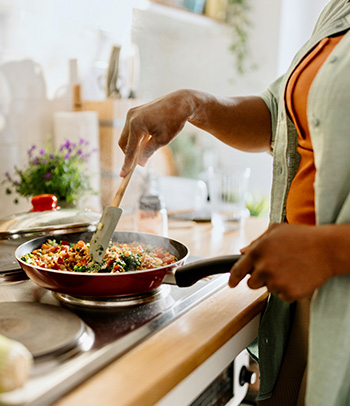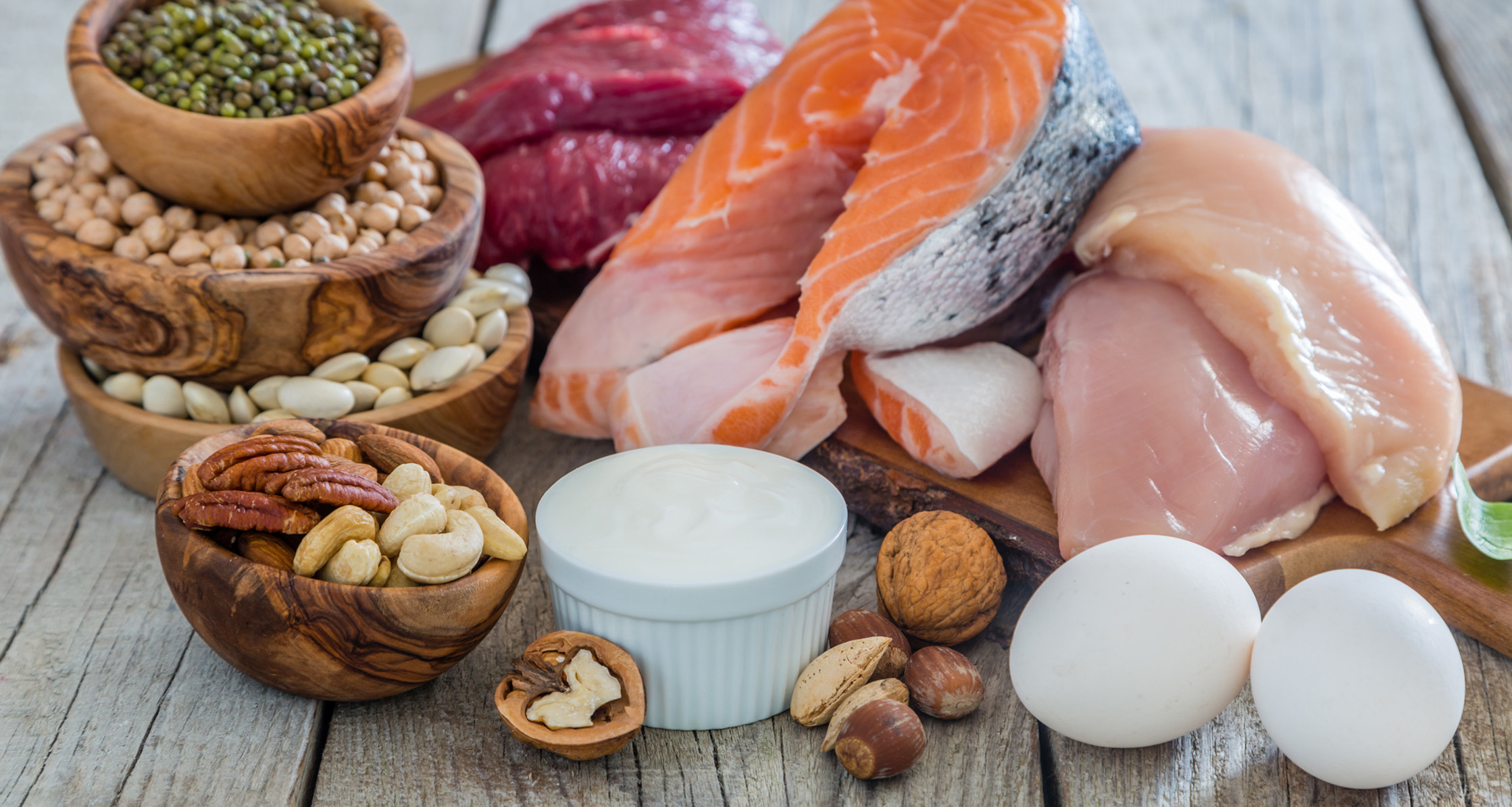Be sure you’re incorporating a variety of high-protein foods in your diet to keep your body healthy and strong.
It’s hard to stay on top of all the latest news when it comes to a healthy diet. People throw around the names of different diets, suggest supplements and tell you to eat more of one nutrient and barely any of another. But sometimes, it just comes down to the basics, like ensuring you give your body everything it needs to be healthy.
Protein is one of those nutrients your body needs to function at its best. Learn more about the benefits of protein and how to get more of it into your diet.
Why Is Protein Important?
Protein is found in every cell in the body, and our bodies benefit from it for a variety of reasons. It helps to build muscle and gain greater strength, maintain healthy bones, provide us with feelings of satiety and fullness, and limit age-related muscle loss.
How Much Protein Do You Need?
How much protein you need depends on several factors, including your age, sex, height, weight and level of physical activity. The Centers for Disease Control and Prevention (CDC) recommends that between 10% to 35% of your daily calories come from protein, which ends up being about 46 grams of protein for adult women and 56 grams for adult men.
What does that look like in a day? Let’s see an example:
- 1 cup of milk = 8 grams
- 1 container of Greek yogurt = 17 grams
- 3 ounces of chicken (the size of a deck of cards) = 23 grams
- 1 cup of quinoa = 8 grams
This example gets you to 56 grams of protein for a day. Check out MyPlate’s Protein Food Groups to help you figure out how to reach your optimal amount of protein each day.
If you have a health condition, such as kidney disease or diabetes, talk to your health care provider about your specific protein goals. Protein makes the kidneys work harder, so you may have to watch your daily protein intake.
What Are the Best Ways to Get More Protein?
Here are some examples of high-protein foods to consider including in your diet:
- Seafood
- Meat
- Poultry
- Eggs
- Legumes (beans, peas, lentils)
- Nuts and seeds
- Soy products
- Chickpeas
- Edamame
- Nut butters
- Oats
- Quinoa
- Tofu
Remember, foods contain much more than just protein, so when we consider how to get more of it, we need to consider what else we’re getting too.
Here are some things to keep in mind when building more protein into your diet:
- Choose lean unprocessed meats and poultry. Meat can be a great protein source, but red meat can contain high amounts of saturated fat, and highly processed meats like bacon, deli meats or hot dogs can contain high levels of sodium. Aim for lean meats like 90% lean ground beef or skinless chicken.
- Get your protein from a variety of sources. Add protein sources to your diet besides meat such as beans, lentils, peas, walnuts, flax seeds, wild rice, dairy products and more. Many of these protein sources are less expensive than meat and contain important nutrients your body needs.
- Choose healthy seafood options. Try to find seafood options that are high in healthy fatty acids, like salmon and trout.
- Don’t forget about the other food groups. Sometimes when we focus too much on protein, we do it at the expense of other important food groups, such as fruits and vegetables. Check out Are You Getting Enough of the Right Nutrients? for more information about nutrients your body needs daily to thrive.
What Recipes Can I Use to Get Started?
If you’re ready to start adding more protein to your diet, here are some simple recipes you can use to get started:
- For breakfast, try this Spinach-Mozzarella Egg Bake loaded with beans, spinach and 16 grams of protein. Or try these Blueberry Protein Pancakes with 15 grams of protein.
- For lunch, try Rosemary Tuna Salad Sandwiches with 41 grams of protein, whole grain bread, spinach, Greek yogurt and almonds.
- For dinner, try Asian Salmon and Vegetable Packets with 25 grams of protein and only 1.5 grams of saturated fat.
- You can also get a lot of protein from your snacks. Try cottage cheese and fruit, roasted chickpeas, or low-fat Greek yogurt instead of a handful of chips or crackers.
Additional Information
- My Plate’s Healthy Eating Plate provides information to help you plan and consume a balanced diet that includes a variety of healthy proteins.
- VA’s Nutrition and Food Services offers a wealth of nutrition-related resources, including help from registered dieticians, cookbooks and recipes, demonstration videos and much more.
Be sure you’re incorporating a variety of high-protein foods in your diet to keep your body healthy and strong.







